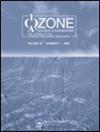Evaluation of the Potential Impact of Medical Ozone Therapy on Covid-19: A Review Study
IF 1.4
4区 环境科学与生态学
Q3 ENGINEERING, ENVIRONMENTAL
引用次数: 4
Abstract
ABSTRACT The key objective of this review is to summarize the available information on the effects of medical ozone therapy in COVID-19 and its therapeutic potentials. An electronic literature search was performed using the PubMed, Cochrane, Web of Science, Science Direct, Scopus, Google Scholar, Ovid Medline, J Stage and China Knowledge Resource Integrated (CNKI) databases to September 2021. In total, 1833 articles were identified. Twenty-six articles were selected out of 667 articles. The most preferred and effective administration method for COVID-19 is major autohemotherapy (MAHT), followed by rectal insufflation and minor autohemotherapy (MiAHT). However, other methods, including ozonized oils and ozonated saline, are also used for COVID-19 due to ease of application, prophylactic and therapeutic effects. In studies, 850 patients were treated with ozone therapy as a complementary treatment. The effectiveness of ozone concentrations below 20 μg/mL or above 45 μg/mL for MAHT are yet to be proven in the COVID-19 patient population, and may be less effective. Complementary ozone therapy combined with antivirals increase the activity of antivirals against COVID-19. Large-scale, multicenter randomized clinical trials are needed to be able to isolate the effect of ozone therapy where the clinical variables are distributed more homogeneously. Also, an extended period of follow-up of COVID-19 patients may give more accurate indications about the effectiveness of the treatment in the long term.医用臭氧治疗对Covid-19潜在影响的评价综述
摘要本文综述了医学臭氧治疗新冠肺炎的疗效及其治疗潜力的现有信息。使用PubMed、Cochrane、Web of Science、Science Direct、Scopus、Google Scholar、Ovid Medline、J Stage和中国知网(CNKI)数据库进行电子文献检索至2021年9月。总共鉴定了1833件物品。从667篇文章中选出26篇。对于COVID-19,最优选和最有效的给药方法是大自体血液治疗(MAHT),其次是直肠灌流和小自体血液治疗(MiAHT)。然而,由于易于使用、具有预防和治疗效果,其他方法,包括臭氧化油和臭氧化盐水,也用于COVID-19。在研究中,850名患者接受了臭氧治疗作为补充治疗。臭氧浓度低于20 μg/mL或高于45 μg/mL对MAHT的有效性尚未在COVID-19患者人群中得到证实,可能效果较差。补充臭氧疗法联合抗病毒药物可提高抗病毒药物对COVID-19的活性。需要大规模、多中心的随机临床试验来分离臭氧治疗的效果,因为臭氧治疗的临床变量分布更为均匀。此外,对COVID-19患者的长期随访可能会更准确地说明长期治疗的有效性。
本文章由计算机程序翻译,如有差异,请以英文原文为准。
求助全文
约1分钟内获得全文
求助全文
来源期刊

Ozone: Science & Engineering
环境科学-工程:环境
CiteScore
5.90
自引率
11.10%
发文量
40
审稿时长
2 months
期刊介绍:
The only journal in the world that focuses on the technologies of ozone and related oxidation technologies, Ozone: Science and Engineering brings you quality original research, review papers, research notes, and case histories in each issue. Get the most up-to date results of basic, applied, and engineered research including:
-Ozone generation and contacting-
Treatment of drinking water-
Analysis of ozone in gases and liquids-
Treatment of wastewater and hazardous waste-
Advanced oxidation processes-
Treatment of emerging contaminants-
Agri-Food applications-
Process control of ozone systems-
New applications for ozone (e.g. laundry applications, semiconductor applications)-
Chemical synthesis.
All submitted manuscripts are subject to initial appraisal by the Editor, and, if found suitable for further consideration, to peer review by independent, anonymous expert referees.
 求助内容:
求助内容: 应助结果提醒方式:
应助结果提醒方式:


